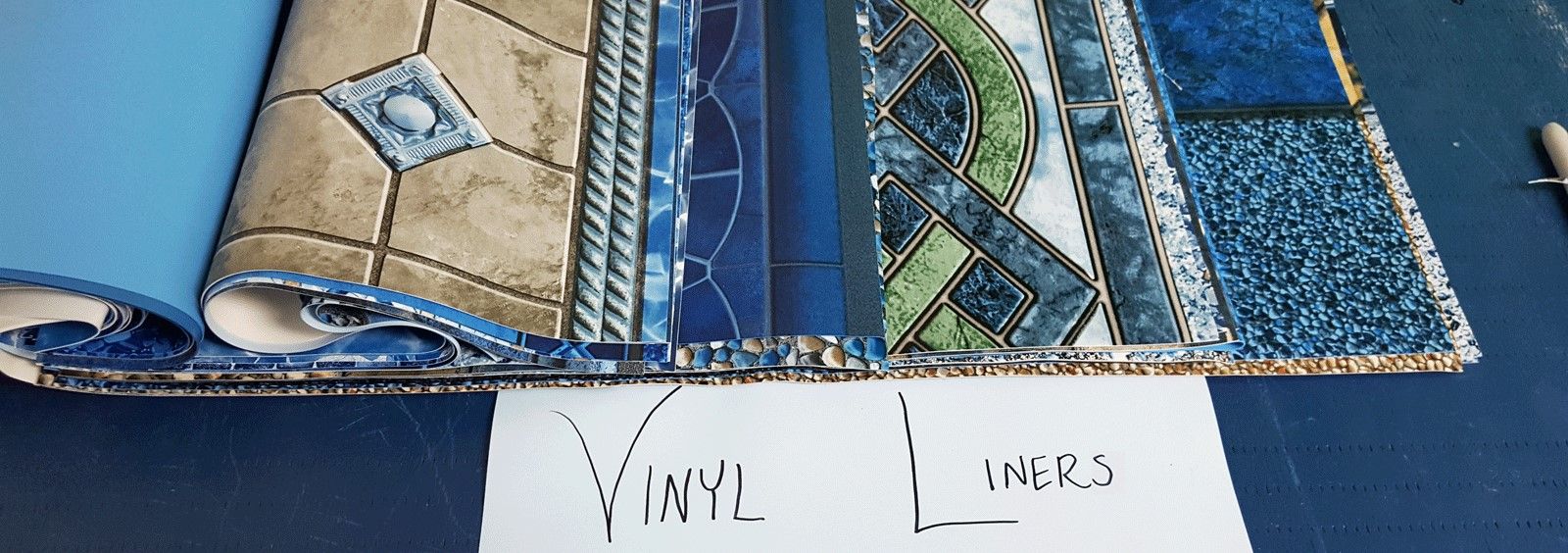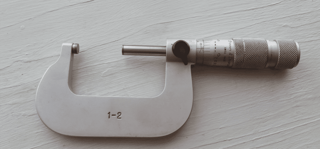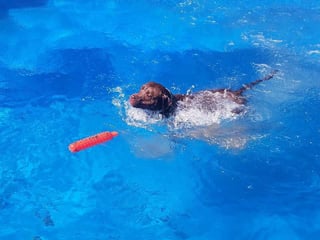
How Is the Thickness of a Vinyl Liner Measured?
Options and Accessories | Vinyl Liner Pool Information
Looking for the perfect vinyl liner pool? You’ll eventually have to choose the vinyl liner part of that. Color and design, of course—but how thick are the different pool liner options? How do the manufacturers measure it? What does the measurement mean in normal people terms?
River Pools specializes in fiberglass pools—but we know they aren’t for everyone, and that’s okay! We want to provide helpful info about all three pool types. We’ll walk with you as you make your big pool decisions, even if you’re not buying from us.
Let’s have some real talk about how we measure pool liner thickness:
- Mils vs. gauges as units of measurement
- Embossed vs. non-embossed liners
- How thick the liner should be
Mils vs. gauges in pool vinyl liner measurements
Liner measurements in mils
As a standard, vinyl liner thickness is measured in mils.
A mil is 1/1000 of an inch, also called a “thou” (i.e., a thousandth):
- 20 mil = 0.020 in
- 28 mil = 0.028 in
- 30 mil = 0.030 in
For comparison, a sheet of paper is 0.004 inches thick and a dime is 0.053 inches thick.
Note: a mil is not a millimeter. A single mm is about 39 mils. This is some teensy stuff.
How do they measure the liner? Obviously a ruler isn’t going to work. Manufacturers use a micrometer, which looks kind of like a gauge (the tool, not the unit of measurement).

Liner measurements in gauges
If you aren’t confused enough, some manufacturers measure their liners in a unit called the gauge, and it can actually vary in size from dealer to dealer.
Fun fact: in industries like sheet metal and shotgun barrels, the gauge measurement goes down as the actual size goes up. So a 12-gauge shotgun barrel is bigger than a 20-gauge. (Seems weird to me, but no one asked my opinion.)
But for pool vinyl liners, the gauge measurement goes up as the actual size goes up. A 20-gauge liner is thinner than a 30-gauge.
Some use “gauge” and “mil” interchangeably. They are not interchangeable. A 20-gauge liner is not necessarily the same thickness as a 20-mil liner.
If you’re shopping for a vinyl liner and it’s measured in gauges, ask for the measurement in mils to be sure you’re on the same page.
Embossed vs. non-embossed pool vinyl liners
Did you think that was the end of it? Not quite!
The stated thickness of a pool vinyl liner partially depends on whether or not the liner is embossed.
For example: 25 mils embossed does not equal 25 mils non-embossed.
Embossed liners vary in thickness, with peaks and valleys. It can feel squishier (yes, "squishier") thanks to this false thickness.
They’re usually measured by the highest peaks of the liner, not by the lower all-solid part, so it’s not really as thick as it measures. It has blank spaces, like Taylor Swift.
Non-embossed liners are flat across the top. This option doesn’t feel as squishy, but it is equally thick all the way through—no “false thickness.”
A 25-mil non-embossed liner has more overall material than a 25/20-mil embossed liner, which still has more material than a 20-mil non-embossed liner.

A pool vinyl liner’s cost increases with the amount of material you need.
By this principle, a 25-mil non-embossed liner costs more than a 25/20-mil embossed liner, which costs more than a 20-mil non-embossed liner.
How thick should my pool vinyl liner be?
The economic option for a vinyl pool liner is 20 mil embossed.
In general, we recommend you upgrade to a thicker liner.
It helps protect the liner from punctures in the first place.
It also provides insurance when the liner is punctured. In many cases the damage can be patched rather than completely replaced.
That extra protection is especially handy if you have a dog that likes to play in the pool.
Take a look at the pros, cons, and costs of thick vs. thin pool vinyl liners in order to choose the best option for you and your family.
Alternatives to inground vinyl liner pools
Liner maintenance is a common issue for inground vinyl liner pools. And in the long run, liner replacements can outweigh the initial low cost.
To help you choose the best pool for your family, we recommend you compare vinyl liner pools, concrete pools, and fiberglass pools.
Concrete pools are durable and won’t be scratched or split by dog claws or sharp objects that fall in the pool.
While they have a higher initial cost and a higher lifetime cost for maintenance than vinyl liner pools, concrete pools look classic and don’t lose resale value.
Fiberglass pools are also fine for dogs to play in. Their claws won’t tear or puncture the gelcoat.

Fiberglass pools have no liner to replace, which reduces your lifetime cost of ownership.
While the shapes and sizes are less customized, most people can find a model that fits their needs. They’re super durable and low-maintenance—not to mention pretty!
At River Pools we manufacture and install fiberglass pools in Virginia and Maryland (and in other areas of the country through our dealers). Read through our ebook about the three pool types, and get in touch with us to see if fiberglass might be the right choice for you. We look forward to helping you!
Up Next:
Inground Pool Shopping: Can You Buy a Pool Online?
Your Swimming Pool Color Options: Concrete, Vinyl Liner, and Fiberglass
Fiberglass Swimming Pools 101: Manufacturing, Cost, and More




